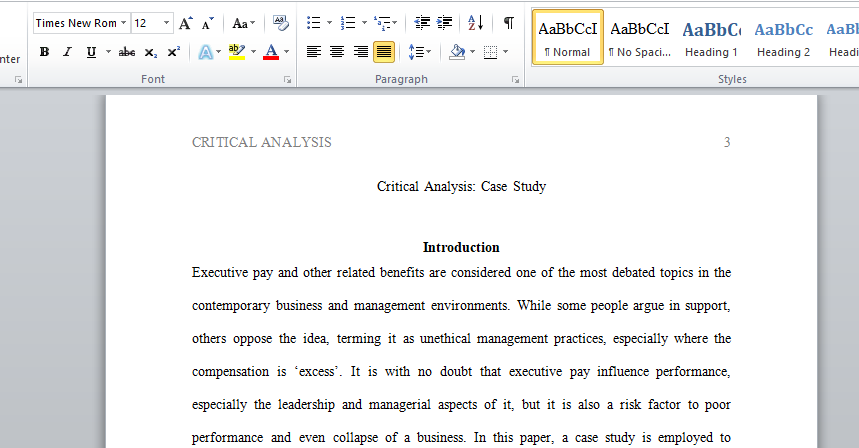The HR related case analysis
Instructions
Please choose a case from the end of any chapter of the course text for analysis. A case analysis is designed to sharpen your analytical skills. The case analysis selected (either by the instructor or by the student) will be HR related. The strongest way to analyze a case is to apply a variation of the scientific method. This method of analysis issimply a logical approach that usually includes the seven steps outlined below. The content of the paper should be 6 – 8 pages in length and should include a title page, abstract page, and reference page.
Step 1: Problem Definition:
A case seldom involves one clear-cut problem. Your task is to:
• determine the symptoms, which require immediate attention;
• identify the fundamental issues and causal factors giving rise to these symptoms. It is important to separate the immediate problems from their more basic causes. For example, the immediate problem may be a high rate of absenteeism, while the more fundamental issue may be a poor motivational climate. How you define a problem determines how you go about solving it. A short-term solution for absenteeism is likely
to be different from solutions that attempt to deal with motivational climate. Be sure to identify both the symptom and, more importantly, its underlying cause.
Step 2: Justification for Problem Definition:
In this step you need to review the information you have about the problem. You may need to make some inferences to fill in gaps. Clearly label what is inference and what is factual. Do not be afraid to assume, but clearly state the assumptions you are making.
You should make assumptions on the basis of your knowledge of typical managerial practices, and they should be consistent with the facts about the case, even though your facts may be somewhat limited. Managerial decisions are often based on limited information. In fact, practicing managers find that many of their decisions have to be made quickly on the basis of limited information.
Step 3: List Alternative Courses of Action:
Be creative. Jot down ideas as they come to you. List as many ideas as you can without evaluating them or censoring anything. You can always cross them out later. The point is to let your imagination take over.
Step 4: Evaluate Alternatives:
Look critically at the alternatives you came up with in Step 3. List advantages and disadvantages of each alternative in terms of criteria that seem appropriate.
Step 5: Review:
Reread your notes and think. This may be a good time to let the case sit for a while. Get back to it later when you have a chance to digest all the data.
Step 6: Draw Conclusions, Make Recommendations/Decisions: Select the alternative you would recommend and justify your choice. Include specifics
about the implementation of your recommendation: who should do what, when, and how.
Step 7: Follow Up and Evaluate:
Given the limitations of a classroom setting, you cannot implement your recommendation and evaluate its actual impact. However, in this step you will describe how you would set up an evaluation procedure. Suggest a timetable and methods for
the evaluation process. State who should do the evaluating.
Case
The United Auto Workers filed an objection to Delphi Corporation’s plan to offer its top executives cash and bonuses potentially valued at more than $500 million, arguing the proposal would impede the ability of the union to reach an agreement with the auto-parts supplier on wage and job cuts for hourly workers. The UAW, along with other Delphi unions like the United Steel Workers, says the compensation plan “is decidedly the wrong message to Delphi’s workers,” at a time union members are being asked to accept pay cuts from an average of $26 an hour to about $12.50 an hour. “It is imperative that the debtor’s key personnel are appropriately incentivized to maximize the financial performance of the debtor’s operations,” says Delphi in its motion supporting the compensation plan. “The alignment of an incentive program that tracks the debtor’s goals is crucial to the debtor’s ability to navigate through this process and emerge successfully from Chapter 11.” Under its proposed employee-compensation plan,
Delphi would allocate $21.8 million for cash bonuses to executives during the first six months of bankruptcy, and then an additional $87.9 million for 486 U.S. executives who would receive 30 to 250 percent of their salaries once Delphi emerges from bankruptcy. The most potentially lucrative element of the compensation plan is a proposal to give Delphi’s top 600 worldwide executives 10 percent of the equity in the reorganized company, a stake the unions estimate could be worth $400 million.
Answer preview:

Words:1,049
